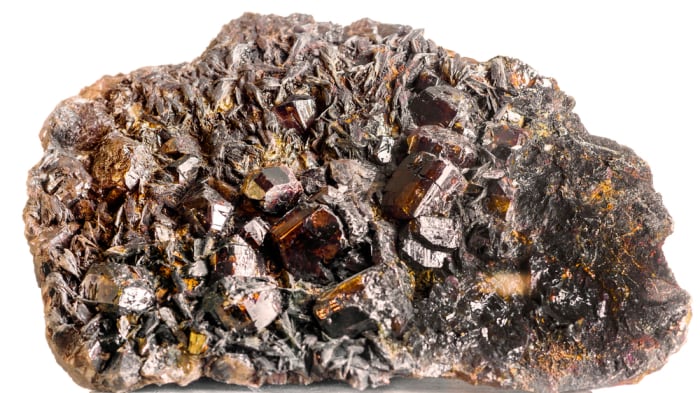Tin: its oxidation states and reactions with it
Chemical properties of tin

Tin is a light metal located in the 14th group of the periodic table, with the atomic number of 50. This element has been known to humanity since ancient times and was considered to be one of the rarest and most valuable metals, so items made from tin could only be afforded by the richest inhabitants of the Roman Empire and Ancient Greece. Special bronze was made from tin, which was used as early as the 3rd millennium BCE. Bronze became the most durable and popular alloy, and tin was used as one of its components, and used for over 2,000 years.
In Latin, this metal was called “stannum”, which means durability and endurance, but this name was previously give to an alloy of lead and silver. Only in the 4th century this word was given to tin itself.
This metal is rarely encountered in nature, it is only the 47th most abundant element in the earth’s crust and is extracted from cassiterite, so-called tin-stone, which has about an 80% content of this metal.

Use in industry
As tin is non-toxic and a very durable metal, it is used in alloys with other metals, but it is mainly used to manufacture tin plate, which is used for cans, solders in electronics, and manufacturing bronze.
Physical properties of tin
A white metal with a silvery shine

If tin is heated, it cracks, which is caused by crystals rubbing against each other. This characteristic crackle is heard if a piece of tin is simply bent.
Tin is very malleable and ductile. In classical conditions, this element exists as “white tin” which can be modified depending on the temperature, for example if white tin is in the cold, it turns to gray tin, which has a structure similar to a diamond. Incidentally, gray tin is very brittle and turns to powder right before your eyes. The term “tin pest” exists in history for this reason.
People did not know about this property of tin, so it was used to make buttons and mugs for soldiers, and also other useful items, which turned into powder after being in the cold. This put armies at a disadvantage. For example, some historians believe that this property of tin reduced the fighting ability of Napoleon’s army.
Obtaining tin
The main method for obtaining tin is reducing the metal from ore containing tin(IV) oxide, with coal, aluminum or zinc.
SnO₂ + C = Sn + CO₂.
Highly pure tin is obtained by electrochemical refining or the method of zone melting.
Chemical properties of tin
At room temperature, tin is quite resistant to the impact of air or water, as a thin oxide film forms on the surface of the metal. In air, tin starts to oxidize at a temperature of over 150 °C:
Sn + O₂ → SnO₂.

If tin is heated, the element will react with the majority of non-metals, forming compounds with an oxidation state of +4, which is more characteristic for this element.
Sn + 2Cl₂ → SnCl₄
The interaction of tin and concentrated hydrochloric acid takes place quite slowly:
Sn + 4HCl → H₂[SnCl₄] + H₂
With concentrated sulfuric acid, tin reacts very slowly, while it does not enter into a reaction with diluted sulfuric acid at all.
The reaction of tin with nitric acid is very interesting, which depends on the concentration of the solution. The reaction takes place with the formation of stannic acid, H₂SnO₃, which is a white amorphic powder.
3Sn + 4HNO₃ + nH₂O = 3H₂SnO₃·nH₂O + 4NO
If tin is mixed with diluted nitric acid, the element will display metallic properties with the formation of tin nitrate.
4Sn + 10HNO₃ = 4Sn(NO₃)₂ + NH₄NO₃ + 3H₂O
If tin is heated, it can react with alkalis with the release of hydrogen.
Sn + 2KOH + 4H₂O = K₂[Sn(OH)₆] + 2H₂
Here you’ll find amazing and safe experiments with tin
Oxidation states of tin
An ordinary oxidation state of tin is zero.
Sn can also an oxidation state of +2: tin(II) oxide SnO, tin(II) chloride SnCl₂, tin(II) hydroxide Sn(OH)₂.
An oxidation state +4 is most characteristic for this element in tin(IV) oxide SnO₂ and halogenides(IV), for example SnCl₄, tin(IV) sulfide SnS₂ and tin(IV) nitride Sn₃N₄.